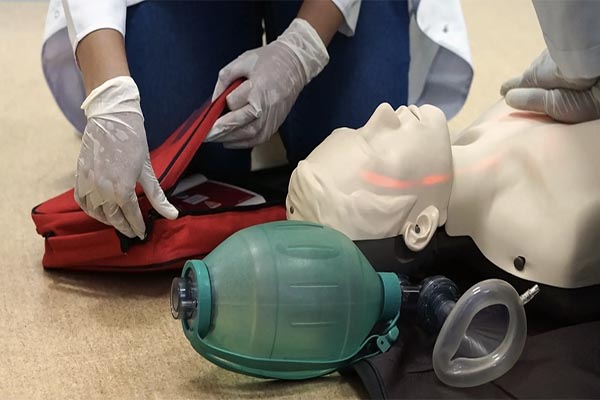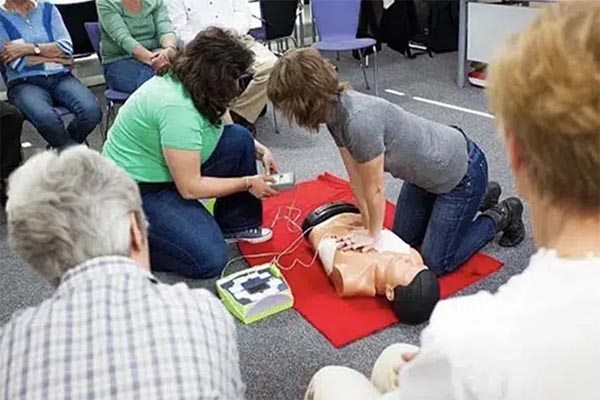
In the ever-evolving landscape of healthcare, first aid is not left behind. The realm of first aid has experienced remarkable advancements, introducing new tools and techniques that are transforming emergency response. These innovations are not only making first aid more efficient but also more accessible to everyone, from healthcare professionals to everyday individuals. In this article, we’ll explore the latest innovations in first aid and how they are changing the way we respond to emergencies.
The introduction of advanced tools in first aid has enhanced the ability to provide immediate care in emergency situations. Let’s delve into some of the most notable advancements.

Gone are the days of basic first aid kits filled with band-aids and gauze. Today’s smart first aid kits are equipped with sensors and connectivity features that guide users through the first aid process. These kits can provide real-time instructions and even alert emergency services if needed. With the integration of technology, smart kits are designed to empower individuals with little to no medical training to administer effective first aid.
Automated External Defibrillators (AEDs) have become more portable and user-friendly. These life-saving devices are now compact enough to be included in home first aid kits or carried in personal bags. Modern AEDs feature voice prompts and visual instructions, enabling even untrained bystanders to assist in cases of cardiac arrest. This accessibility has significantly increased survival rates in such emergencies.
The development of advanced wound care products has revolutionized the management of injuries. Hydrogel dressings, for example, provide a moist healing environment and can accelerate recovery for burns and abrasions. Additionally, hemostatic agents, which promote rapid blood clotting, are now readily available in first aid kits, allowing for immediate response to severe bleeding incidents.
Alongside new tools, innovative techniques have emerged, enhancing the overall effectiveness of first aid.
Virtual reality (VR) is being used to train individuals in first aid procedures in a simulated environment. This immersive experience allows trainees to practice responding to various scenarios, such as performing CPR or managing a choking incident, without the pressure of a real emergency. VR training enhances confidence and competence, ensuring better preparedness for actual situations.
Telemedicine has extended its reach to first aid, offering remote assistance in emergencies. With a smartphone or tablet, individuals can connect with healthcare professionals who provide guidance on administering first aid. This real-time support is invaluable in situations where immediate medical attention is required but professional help is not yet available.

First aid equipment plays a crucial role in emergency preparedness and response. With the advancements in technology, the scope and functionality of first aid equipment have expanded significantly.
Modern first aid equipment often serves multiple purposes. For instance, a single device can function as a flashlight, radio, and power bank, providing essential tools during emergencies. These multi-functional devices are designed to be compact and easy to use, ensuring that users have everything they need in one place.
Wearable technology has made its way into the first aid field, offering personal safety wearables that monitor vital signs and detect falls. These devices can automatically alert emergency contacts or services if a critical situation arises. By providing continuous monitoring, wearables enhance personal safety and facilitate timely interventions.
The integration of new tools and techniques in first aid has necessitated updates in training programs. Understanding the impact of these innovations on training is essential for maximizing their benefits.
First aid training programs have evolved to incorporate the use of advanced tools and innovative techniques. Trainees now have the opportunity to learn how to operate smart kits, use AEDs, and apply advanced wound care products. Additionally, training programs are increasingly utilizing VR technology to offer hands-on experience in a controlled environment.
Innovations in first aid are making training more accessible and inclusive. Online courses and virtual simulations allow individuals from diverse backgrounds to learn first aid at their own pace. This inclusivity ensures that more people are equipped with the knowledge and skills necessary to respond effectively in emergencies.
As technology continues to advance, the future of first aid holds even more promising possibilities. Here are some potential directions for future innovations.
Artificial Intelligence (AI) has the potential to revolutionize first aid by providing real-time analysis and decision-making support. AI-powered applications could assist users in diagnosing injuries, recommending appropriate actions, and predicting outcomes based on available data. This integration of AI could further enhance the accuracy and efficiency of first aid responses.
Drones equipped with first aid supplies could play a vital role in reaching remote or inaccessible areas quickly. These drones can deliver essential medical supplies, such as AEDs or medications, to individuals in need before professional help arrives. The use of drones in first aid has the potential to save lives by reducing response times significantly.
The field of first aid is undergoing a transformative phase with the introduction of innovative tools and techniques. From smart first aid kits to virtual reality training, these advancements are empowering individuals to respond effectively in emergencies. As technology continues to evolve, the future of first aid looks promising, with even more groundbreaking innovations on the horizon. By embracing these advancements, we can ensure a safer and more prepared society.
In light of the many advancements and innovations in first aid, it’s more important than ever to equip yourself with life-saving skills. CPR Classes Near Me offers comprehensive training programs that will empower you with the knowledge and confidence needed to handle emergency situations effectively. Our courses cover the latest techniques and tools, ensuring you are well-prepared for any scenario. Enroll in a CPR or First Aid class today with “CPR Classes Near Me” and become a critical link in the chain of survival. Your decision to learn could make all the difference in someone’s life.
Our primary goal is to ensure that you receive a top-quality CPR/First Aid certification. With our in-person training in Austin, you can learn CPR and BLS in just one class. Your presence is all that’s needed to continue with your lesson! During your session, you will complete all the live-training components necessary to ensure you receive your AHA Healthcare Provider certification card.
Our CPR Classes in Austin are discounted to $59.95 (saving you $20), and our CPR + First Aid Class is offered at $79.95 (also saving you $20). When looking for CPR Classes, ensure to check for the American Heart Association seal. Other sites might seem cheaper but frequently lack the official training credentials demanded by employers.
Upon successful completion of the course, you will obtain a CPR certification that is valid for two years. The AHA CPR certification is recognized with the highest acceptance rate among employers nationwide.
Indeed! Enroll in any CPR Certification Austin BLS course to extend your certification for an additional two years. The in-person BLS course and the Renewal Class are identical.
Anyone capable of completing the course independently should consider pursuing CPR training and CPR Certification. There is no minimum age restriction for obtaining a CPR certification in Austin through the American Heart Association (AHA)..
CPR training needs to be carried out in person to guarantee its effectiveness. Our experienced instructors offer an engaging and dynamic learning experience. Typically, employers do not recognize CPR certifications that are obtained solely through online courses.
All authorized American Heart Association training centers are obligated to display the entire video. After a three-hour session with CPR Classes Near Me Austin, your BLS CPR eCard will be promptly issued by the instructor on the same day!